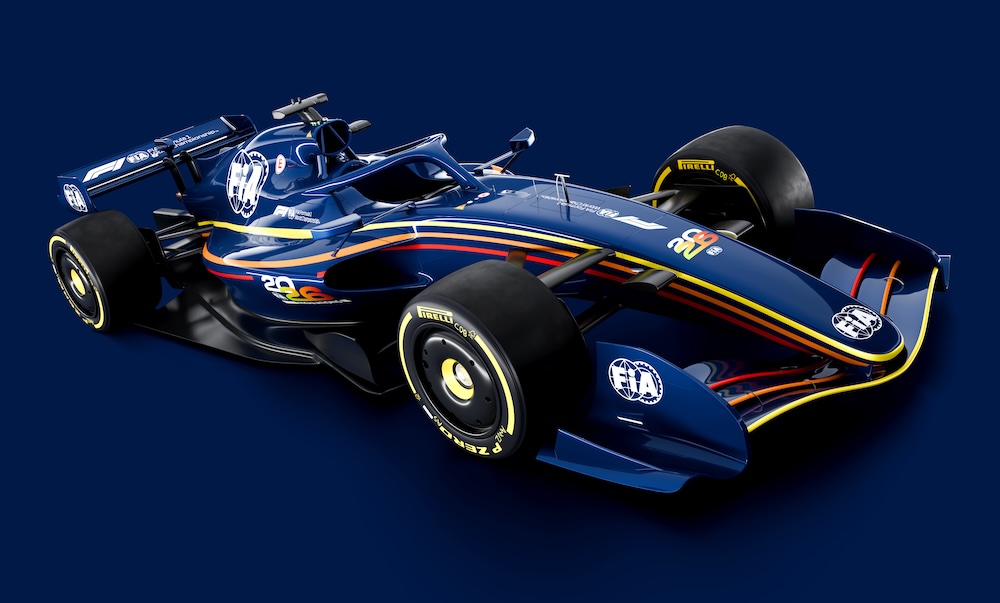Max Verstappen says the FIA and Formula 1 have made “really good progress” on the 2026 regulations but is among many drivers reserving judgment about such a radical change.
On Thursday the FIA released images of how it expects the 2026 car to look alongside a number of technical regulation updates ahead of their ratification later this month. The new power units — that feature more reliance on electrical energy and a 100% sustainable fuel — had drawn criticism last year due to a potential power loss when deployment ran out on some straights, but Verstappen says there have been gains made since.
“I’ve seen a lot of simulation,” Verstappen said. “It’s not like it suddenly came out now and now we start developing, it’s something that has been around and fine-tuned of course. And I have to say from the first time I saw it to the latest updates that I’ve seen, I think they made really good progress on how the engine is working with the chassis and the relationship on the straights and stuff.
“Some tracks I think will be better than others, naturally, when you are more energy-limited, but that’s something that we have to deal with.”
[lawrence-related id=357946,357940,357925]
On the whole, however, Verstappen is unsure how the slightly lighter and smaller cars will perform from a racing perspective, with active aerodynamics set to be introduced.
“To be honest I’m quite in the middle,” he said. “New rules are new rules, I do think that it’s a bit of a consequence of the engine as well. They say it’s 50:50 between engine and battery, but it’s not really like that, so that’s why we need the active aero on the straight to reduce the drag — to make it more sustainable to do a proper lap, otherwise you run out of battery. Which I think was a problem that they found out.
“Of course, the longer you keep the regulations the same the closer it gets between the teams. So 2026 will probably be quite a bit of a reset, not only from the car performance side but also the engine side. People can hit the regulations well and have a big advantage on the engine, maybe; this is something of course that we don’t know at the moment but some people probably feel more confident about that than the others.
“But on the other hand F1 wanted to attract new manufacturers as well and you needed a rule change for that to happen. We’ll see. I’m very positively surprised when I jump in the real car and I’m like, ‘Oh, this is amazing!’ I don’t know, but at the moment I’m in the middle. We drive what we get.”
Verstappen was also unsure the planned 30kg weight reduction would be achievable given current limits, but stated it was too small a change to make a significant difference, something Lewis Hamilton agreed with.
“I mean, it’s only 30 kilos, so it’s going in the right direction, but it’s still heavy,” Hamilton said. “I’ve spoken to some drivers who have driven it on the simulator — I haven’t — but they said it’s pretty slow. So we will see whether it’s actually the right direction or not.
“But I think in terms of sustainability, particularly on the power unit side, I think that’s a really bold step and I think it’s going in the right direction. We’ve just got to make sure the cars are efficient, fast, and a natural step forward, and actually racing is improved.”
Both Hamilton and Verstappen referenced the risk of the field being spread out again under new regulations, while Oscar Piastri highlighted how close the front-runners are getting the longer the rules stay the same.
“I think every time the regs have changed, it’s led to a pretty big spread, especially with engines — 2014 being the last time with that and kicking off a really long period of dominance,” Piastri said. “And I think we’ve seen even with these regs, we’re only just starting to catch up to Red Bull, week in, week out, now.
“I think we have an important place in society to be at the forefront of technology and innovation, and that’s always what F1’s been about in some ways. I guess you could argue that sometimes that does come at the cost of the racing, which is always a shame.
“I think both points are kind of separate, really. I wouldn’t be surprised if the teams sort of separate a bit more in 2026, both with different aero regs and especially the engine regs. There’s a very big chance, I would say, that the teams are going to be more spread out than what they are now.”
One of the other drivers who has tested the new rules out in a simulator is Nico Hulkenberg, who believes they will lead to a very significant change to the way the cars handle, but suggested further improvements can be made before the final aerodynamic regulations are released for development at the start of 2025.
“It’s certainly quite different,” Hulkenberg said. “Some interesting areas and aspects. I think some that still need a bit further work. Like Lewis said, I think the weight reduction is good, but then 30 kilos… It’s not the world.
“It looks like a lot less downforce, especially high-speed corners. It will be quite a different scenario and characteristic to now. So there is going to be definitely a drastic change. And change… you’re not always so open to it. But we’ll see what happens between now and in the one and a half years, if there might be some small adjustments or not with what’s going on.”
